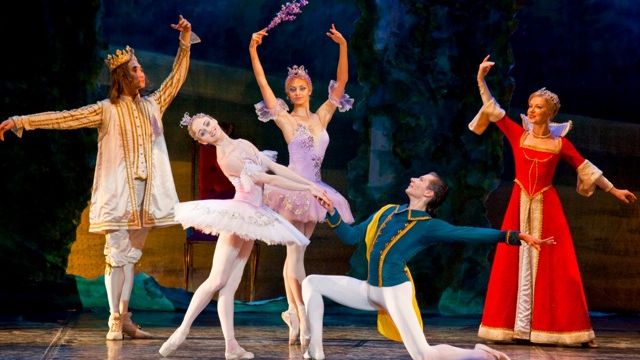Sleeping Beauty
The Imperial Russian Ballet (not to be confused with the Russian National Ballet) is touring the world with this timeless work by Tchaikovsky, whose original choreography by Marius Petipa has been revised by Gediminas Taranda for the season. The story is fairly discernible merely through watching (although I wouldn't have known without benefit of the programme or the ballet's web site that a dream sequence was just that).
Some 123 years after its composition and 313 years after first publication by Charles Perrault, the Sleeping Beauty tale continues to charm ballet audiences today with its universal themes of vengeance and the power of love.
This is a work in which lighting, costumes, props, and set work together remarkably to create a visual feast that the eye can enjoy for more than the occasionally exquisite formations of its dancers. What may strike you as you watch is the mystery of how the picturesque whole emerges from a combination of glitter, long legs, horizontal tulle, lights, movement, and poise. Not every dancer can be a Nijinksy or Pavlova, but the whole was indeed seamless. Although I found the third act bemusing in its lack of evident progression from one dance to another, it was the act that best showed off the abilities of several soloists, and was worth watching for that alone.
John P. Harvey
Image: (L–R) Vitautas Taranda, Yaroslava Araptanova, Anna Pashkova, Nariman Bekzhanov, and Nataliya Trifonova, in Sleeping Beauty. Picture: Nadya Pyastolova.
Subscribe to our E-Newsletter, buy our latest print edition or find a Performing Arts book at Book Nook.

